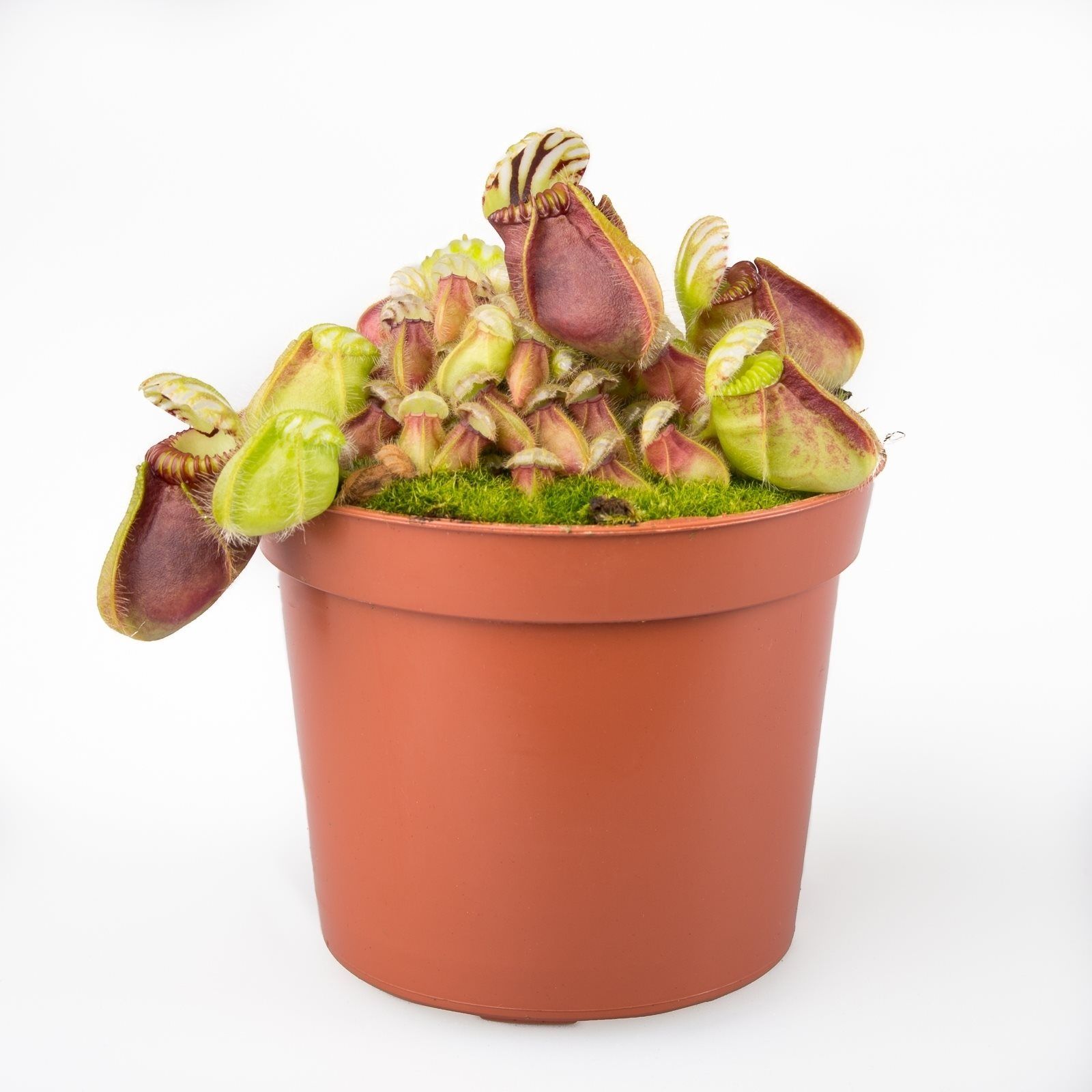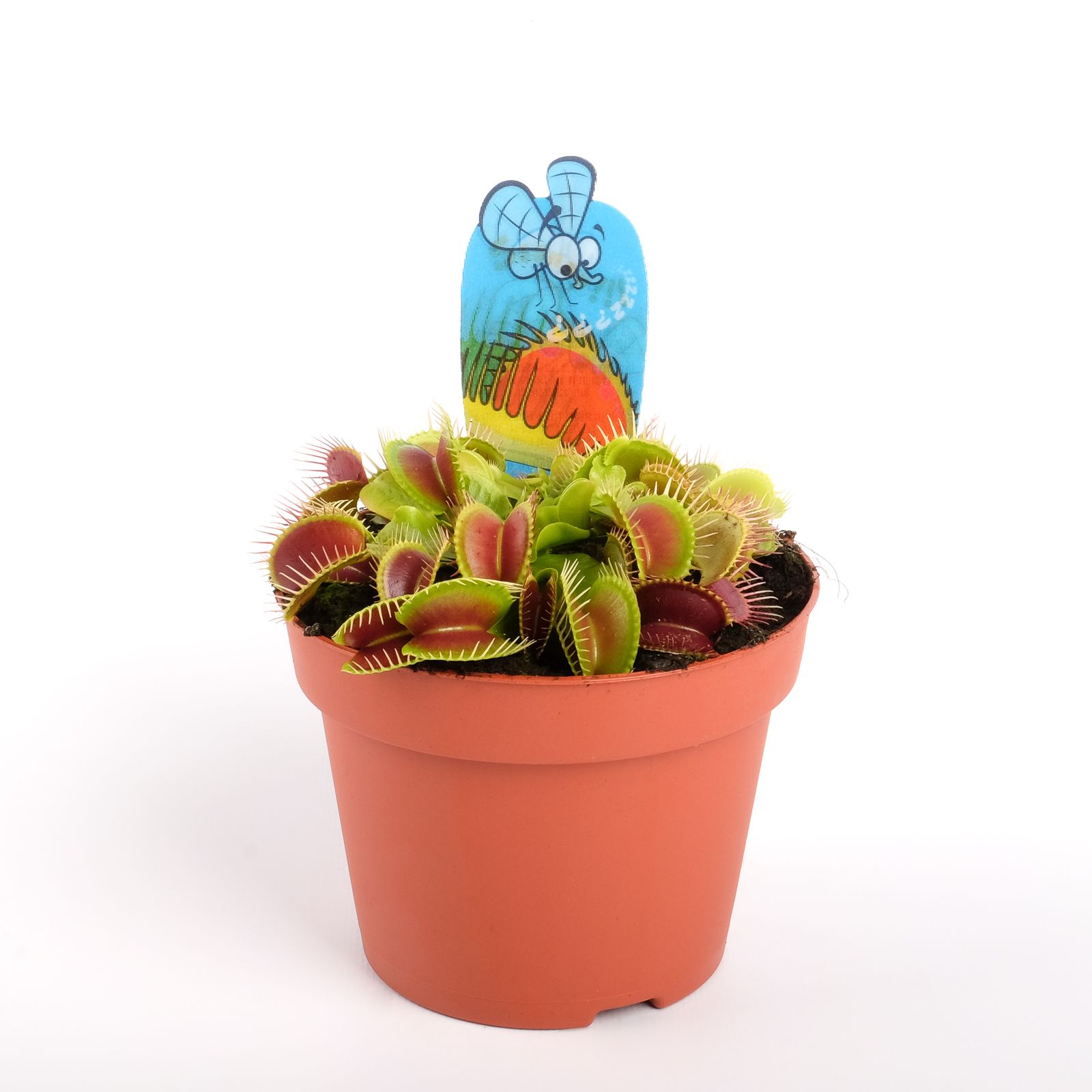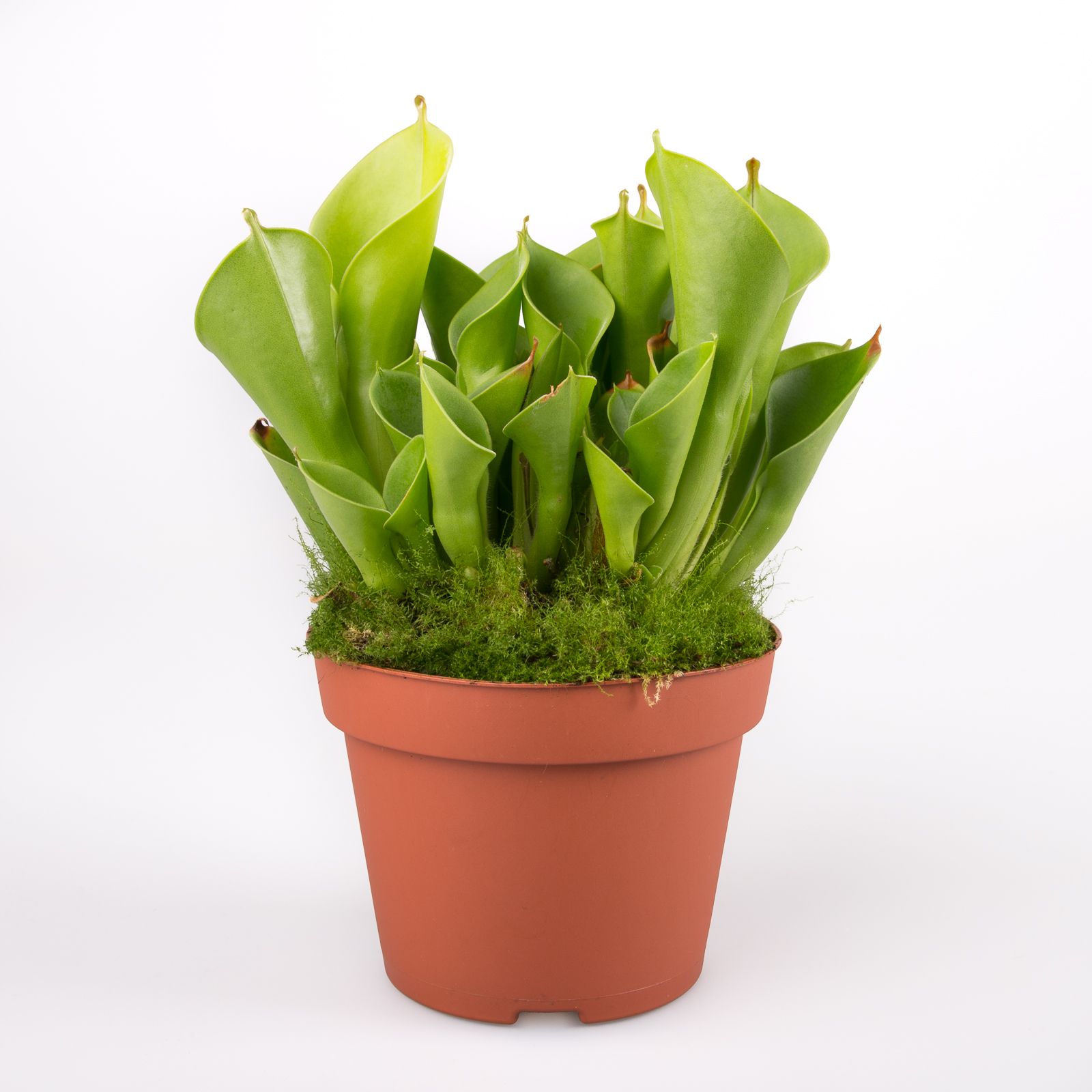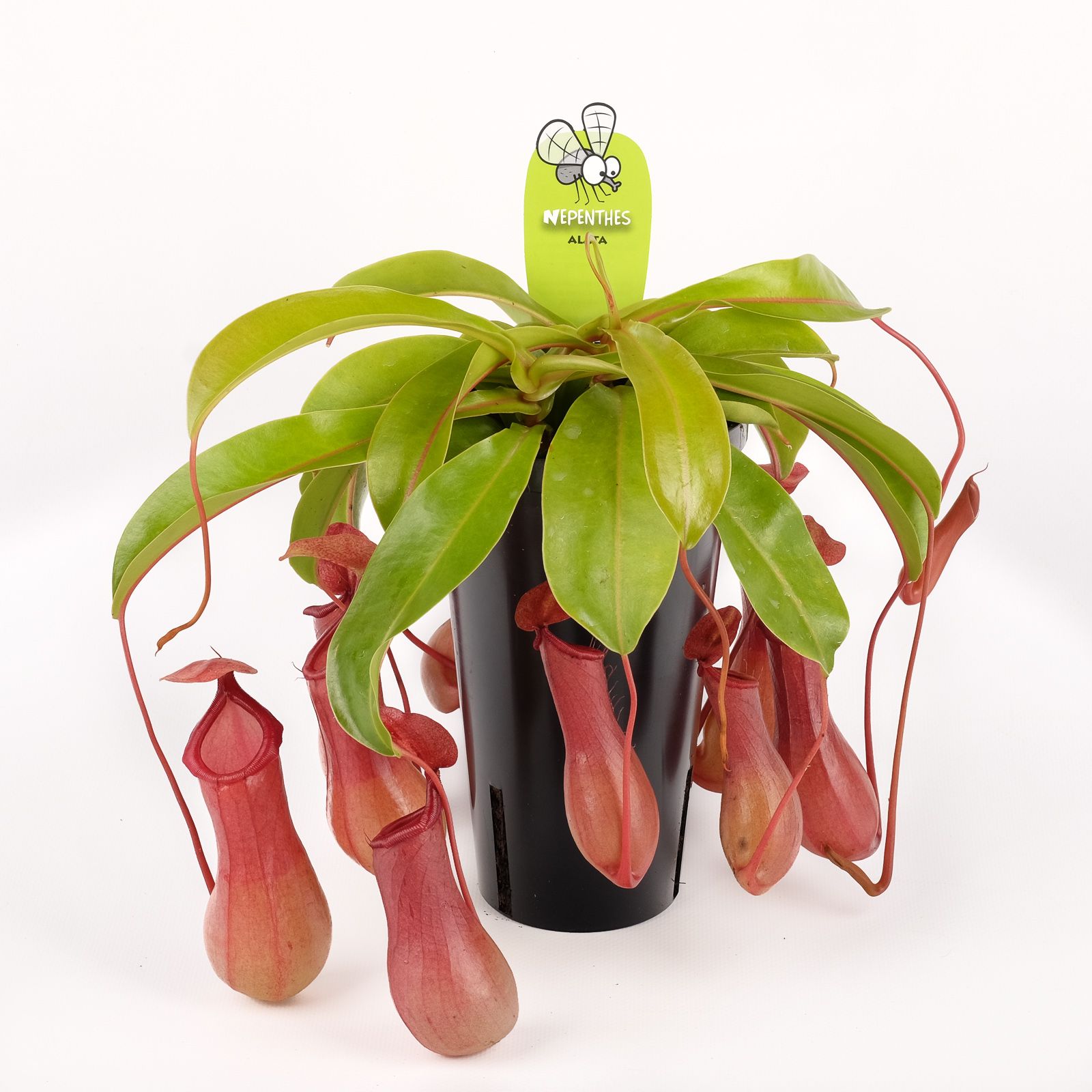Care
Carni Flora has a wide range of different types of carnivorous plants. The care of carnivorous plants varies per species.
Below is an overview of our selection and type of care that is recommended.
Watering
The Cephalotus may be kept dryer than most carnivorous plants. Allow the ground to dry slightly. This is a relatively vulnerable plant preferring rainwater as opposed to tap water.
Location
A light location is important, but preferably a light location without extreme temperatures or temperature fluctuations. These plants are not used to extreme heat.
This plant is not hardy and must be brought inside during the winter.
Potting soil and fertilizer
This plant, as other carnivorous plants, should not be given fertilizer.

Watering
Rainwater is the most natural thing the Dionaea can get, but not essential. Tap water can also be fine. Make sure the plant doesn’t dry out. Keeping a dish filled with water under the plant is the easiest way to do this.
Location
Place in a bright position. Direct sunlight is great for this plant.
The Dionaea can be placed either indoors or outdoors. The plant can withstand mild winters with frosts of no more than 5°C.
Fertilizer
Do not fertilize the Dionaea.

Watering
Keep this plant moist. To make it easy, keep the plant on a dish filled with water. As soon as it is dry refill it.
Location
Keep the Drosera in a light place. If the plant loses its “dew” this is an indication that it needs more humidity. Move to a more humid environment or cover it with glass.
Of the Drosera’s in our current range, the Drosera filiformis, nidiformis and binata are all winter hardy. This does not apply to the rest and they should be brought in before the start of the winter.
Fertilizer
The Drosera does not need fertilizer.
Watering
Many carnivorous plants need to be kept moist, the Heliamphora is an exception. Just like the Cephalotus, the Heliamphora can be kept slightly drier.
Location
The Heliamphora does well in a bright location. Preferably not an extremely warm place with a temperature of not higher than 25°C.
These plants are not hardy, so make sure they are indoors during the cooler months.
Fertilizer
Do not fertilize the Heliamphora.

Watering
Keep the Nepenthes soil continually moist. This can be done by placing a waterfilled dish under the plant. It is a myth that the pitchers of the Nepenthes need to be refilled regularly. The plant does this on its own.
However, it is possible that the pitchers lose their moisture during transport. Larger plants are often transported with the pitchers upside down. In that case, the pitchers can be refilled once(!) to a quarter with rainwater to prevent the traps from drying out.
Location
In general, the Nepenthes needs a humid location. However, the Nepenthes Bloody Mary is a lot less picky and does well in almost every living room.
The plants do need light, but no direct full sun. We also recommend keeping the plant inside.
Fertilizer
We do not recommend to give these plants fertilizer.

Watering
Do not overwater the Pinguicula, as this can cause rotting. Keeping the soil slightly moist is enough for the plant to survive. Pinguicula doesn’t need rainwater and grows fine on tap water.
Location
A light location, out of direct sunlight is ideal for the Pinguicula. This can be inside or outside, but keep in mind that the plants we sell are not hardy and must overwinter inside.
Fertilizer
As with all carnivorous plants, we do not recommend giving them fertilizer.
Watering
You can’t overwater a Sarracenia, in principle. It’s not a problem for this plant to stand continuously in water. We advise you to put the potted plant in a dish of water. Make sure there is always enough water in the dish. Tap water is fine.
Location
Keep the plant in a light spot. This is important for growth and colouring. This can be in the window sill or outside. The plant also likes a humid climate.
All the Sarracenias in our range can easily survive in temperatures between -10°C to 40°C. Therefore, pond side is the ideal place for the plant outside. The plant goes dormant towards autumn and winter. Old pitchers turn brown and the plant doesn’t form new pitchers. In spring or early summer the development of the plant and new pitchers will resume.
Fertilizer
The same applies to all carnivorous plants. They started to catch insects because they live in nutrient-poor soil. Although fertilizer is easy, you quickly give too much. Therefore it is better not to give any.
Watering
The Utricularia likes to stand with its feet in water. Always keep the soil moist. This plant can’t get too much water.
Location
A light spot promotes flowering. The windowsill is a good place for the Utricularia.
Fertilizer
No matter how innocent the plant looks, the Utricularia also catches its own food, but under the ground instead of above. Don’t give this plant extra fertilizer either.
Any questions? Message us!
We will try to reply to your messages as soon as possible.


